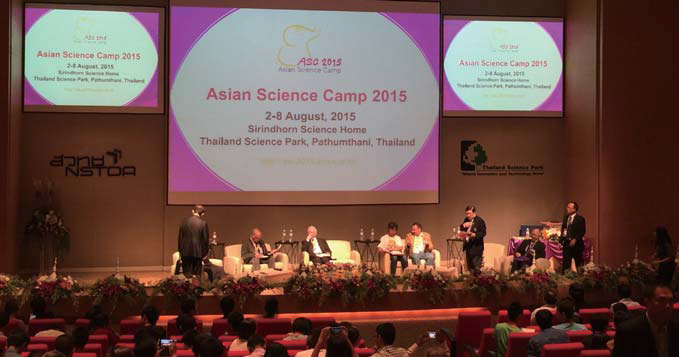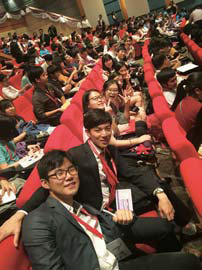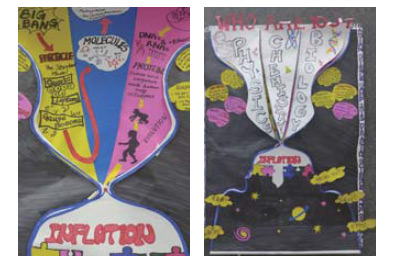주메뉴
- About IBS 연구원소개
-
Research Centers
연구단소개
- Research Outcomes
- Mathematics
- Physics
- Center for Underground Physics
- Center for Theoretical Physics of the Universe (Particle Theory and Cosmology Group)
- Center for Theoretical Physics of the Universe (Cosmology, Gravity and Astroparticle Physics Group)
- Dark Matter Axion Group
- Center for Artificial Low Dimensional Electronic Systems
- Center for Theoretical Physics of Complex Systems
- Center for Quantum Nanoscience
- Center for Exotic Nuclear Studies
- Center for Van der Waals Quantum Solids
- Center for Relativistic Laser Science
- Chemistry
- Life Sciences
- Earth Science
- Interdisciplinary
- Center for Neuroscience Imaging Research (Neuro Technology Group)
- Center for Neuroscience Imaging Research (Cognitive and Computational Neuroscience Group)
- Center for Algorithmic and Robotized Synthesis
- Center for Genome Engineering
- Center for Nanomedicine
- Center for Biomolecular and Cellular Structure
- Center for 2D Quantum Heterostructures
- Institutes
- Korea Virus Research Institute
- News Center 뉴스 센터
- Career 인재초빙
- Living in Korea IBS School-UST
- IBS School 윤리경영


주메뉴
- About IBS
-
Research Centers
- Research Outcomes
- Mathematics
- Physics
- Center for Underground Physics
- Center for Theoretical Physics of the Universe (Particle Theory and Cosmology Group)
- Center for Theoretical Physics of the Universe (Cosmology, Gravity and Astroparticle Physics Group)
- Dark Matter Axion Group
- Center for Artificial Low Dimensional Electronic Systems
- Center for Theoretical Physics of Complex Systems
- Center for Quantum Nanoscience
- Center for Exotic Nuclear Studies
- Center for Van der Waals Quantum Solids
- Center for Relativistic Laser Science
- Chemistry
- Life Sciences
- Earth Science
- Interdisciplinary
- Center for Neuroscience Imaging Research (Neuro Technology Group)
- Center for Neuroscience Imaging Research (Cognitive and Computational Neuroscience Group)
- Center for Algorithmic and Robotized Synthesis
- Center for Genome Engineering
- Center for Nanomedicine
- Center for Biomolecular and Cellular Structure
- Center for 2D Quantum Heterostructures
- Institutes
- Korea Virus Research Institute
- News Center
- Career
- Living in Korea
- IBS School
News Center
| Title | Report from the Asian Science Camp 2015 | ||||
|---|---|---|---|---|---|
| Name | Department of Communications | Registration Date | 2015-08-29 | Hits | 3773 |
| att. |
 thumb.jpg
thumb.jpg
|
||||
|
Report from the Asian Science Camp 2015 “I DO NOT Consider Myself a Woman Mathematician, BUT a MATHEMATICIAN”
Inspired by the Lindau Nobel Laureate Meetings that is held yearly in the small town of Lindau, Germany, Professor Yuan Tseh Lee (1986 Nobel Laureate in Chemistry) from Taiwan and Professor Masatoshi Koshiba (2002 Nobel Laureate in Physics) from Japan co-proposed an annual forum called the Asian Science Camp (ASC) in order to enlighten science talented youths in Asia through discussions and dialogues with world-distinguished scientists. The ASC 2015 was successfully held from August 2 to 8 in Thailand with science students from 29 countries and professor speakers including Nobelists, Fields Medalists, and the winners of the Yukawa Commemoration Prize and the Nikkei Asia Prize. Selected by IBS as one of the Korean students who will participate in ASC 2015, I took a flight to Thailand on August 2, 8:00 a.m. full of expectationns. After five hours, the plane arrived at Suvarnabhumi Airport in Bangkok. From there, I took about an hour long bus ride to the Sirindhorn Science Home, one of the ASC venues located inside the Thailand Science Park. Later, while enjoying a welcome dinner held at the building, I met student participants from various Asian countries. Discussing cosmology with Professor Murayama The second day of the ASC 2015 started with a welcome speech by Her Royal Highness Princess Maha Chakri Sirindhorn. I was deeply impressed with her speech because I could feel her patriotic aspiration for the prosperity of her country through the development of science and technology. Right after the speech, Professor Hitoshi Murayama’s “Introduction to Cosmology” lecture session began.
Emphasizing the importance of dark matter, which is considered one of the most mysterious substances that we know of, Professor Murayama introduced to us evidence that dark matter does exist throughout the universe. Discovered while examining a collision between two galaxies, the evidence strongly supports the argument of some astronomers in the late 1970s that several galaxies, including our galaxy, could not be kept stable with the gravity generated by their visible matter only. A research team found that a theoretical calculation of the center of the mass of a new galaxy, which had been created by the collision of two galaxies a million years ago, did not match the center of the mass calculated experimentally through the real observation of the galaxy. Consequently, the research team inferred the existence of dark matter particles that do not carry any electric charge nor interact with one another on any significant level. Throughout his lecture, Professor Murayama lit up the entire classroom with his humor, charisma, and systematic delivery of content regarding cosmology, which is a very complicated scientific field. Q “During the plenary session, you told us that WIMPs are one of the strongest candidates for dark matter. Then, can strongly interacting particles be a candidate as well? If so, they would be capable of interacting, unlike WIMPs, with the rest of the matter and the energy in the universe. If this is the case, what are the implications for the universe as a whole? A: “Actually, that question is an excellent one because I have just published a paper about WIMPs last week! So, let me elaborate a little more about that. Currently, there are a lot of different suspected models for dark matter including WIMPs and so on. The reason for this is that we can only observe the upper limit of the strength of dark matter’s interactive forces within the galaxy at this point. Thus, we consider any model of dark matter valid as long as it does not exceed the upper limit of that strength or energy. In conclusion, we are quite open to many theories of dark matter as its properties remain quite unknown to us.” Q: “Currently, physicists are viewing the universe at the microscopic level such as conducting experiments to prove the existence of the Higgs boson or the validity of superstring theories. But can’t we view the universe rather macroscopically? For example, I thought that we could determine the topological structure of the universe by extending William Thurston’s ‘classification of three-dimensional manifolds’ to the classification of four-dimensional manifolds. To elaborate a little more, I think that if wormholes do exist, we could say that the structure of the universe is isomorphic to a four-dimensional torus.” A: “Some physicists are working on that problem too, but those hypotheses are mostly based on hyperbolic geometry, in which the sum of all of the inner angles of a triangle may not be equal to 180 degrees. We determine a manifold’s topological structure by calculating the sum of the inner angles of a triangle drawn on that manifold and verifying whether it is bigger or smaller than 180 degrees. So, physicists designate three different places in the universe and make a triangle so that they can compute the sum of the inner angles and go through the same process I have just mentioned. But I think your idea is a great one too, because the process that today’s physicists are working on can only determine the structure of a tiny part of the universe while yours could determine the structure of the universe as a whole.” Inspired by the visions of great scientists and mathematicians
During the ASC 2005, a series of keynote lectures, camp sessions, and dialogue sessions were conducted, among which the time spent with Professor Yongyuth Yuthavong and Professor Vladimir Voevodsky, a Fields Medalist, were most memorable. On the fourth day of the ASC 2015, we took an excursion to the Ayutthaya Historical Park, where I could learn about the history of Thailand and experience the country’s unique food, clothing, and shelter. At a farewell party on the last day, participating students introduced the culture of their respective countries. I was filled with emotion because I could exchange friendship with many Asian students and perceive them as colleagues. Written by Su-Min Yu | 2nd grade student at the Hankuk Academy of Foreign Studies |
|||||
| before | |
|---|---|
| before |
- Content Manager
- Public Relations Team : Yim Ji Yeob 042-878-8173
- Last Update 2023-11-28 14:20














